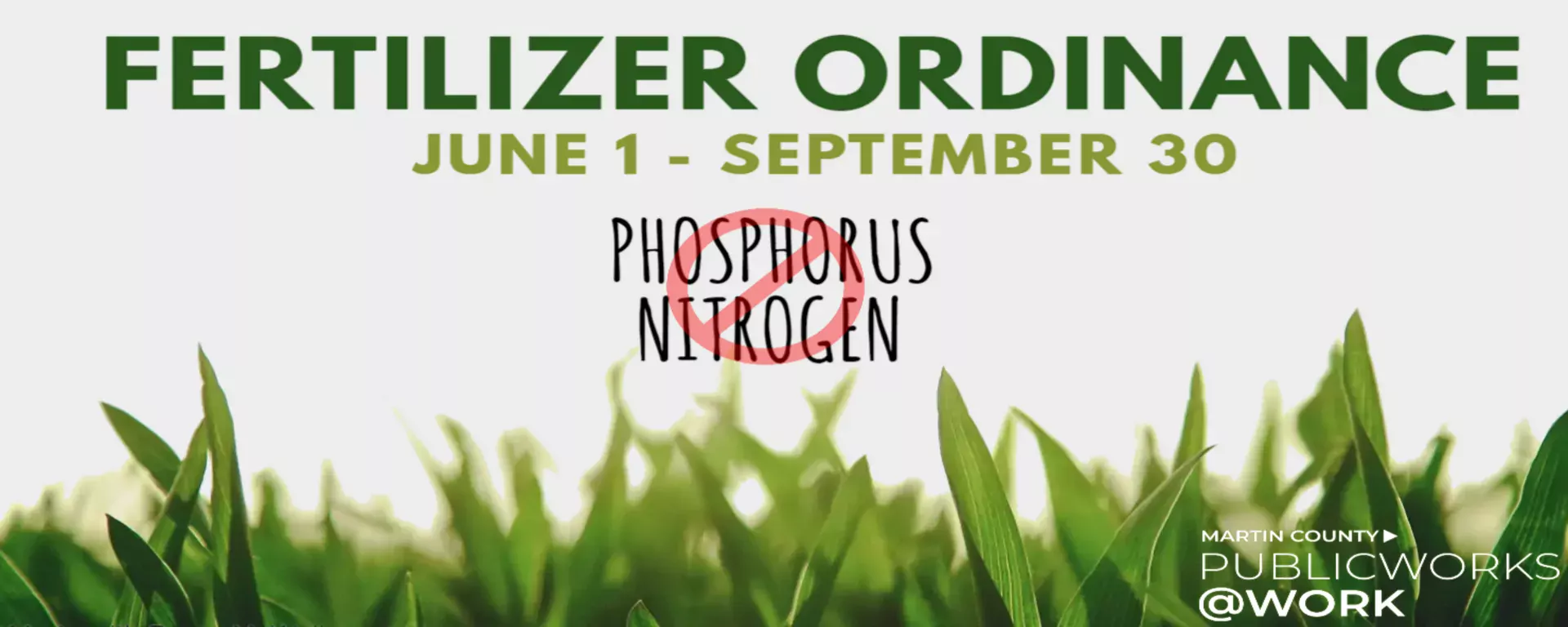About the Ordinance
In 2011, Martin County adopted lawn fertilizer controls that restrict phosphorus and nitrogen all year long. Martin County’s strong fertilizer ordinance has served as a model for over 40 other communities along the Indian River Lagoon. Fertilizer restrictions aim to reduce the amount of harmful nutrients entering local water bodies, a crucial step toward improving and maintaining water and habitat quality.
Fertilizer Application Restrictions
- Application Ban (June 1 – September 30):
- No fertilizers containing nitrogen (N) and phosphorus (P) may be applied to lawns or landscaping during this period.
- Application Period (October 1 – May 30):
- No phosphorus (P) is allowed.
- Nitrogen (N) must be 50% slow-release.
Additional Guidelines
- Grass clippings, leaves, or other vegetative materials cannot be washed, swept, or blown into:
- Stormwater drains
- Water bodies
- Impervious areas
The ordinance applies to both personal and professional landscaping in unincorporated Martin County. The fertilizer ordinance includes exceptions for agriculture, golf courses, and athletic fields, as well as for lawns where soil tests have shown a need for phosphorus.

